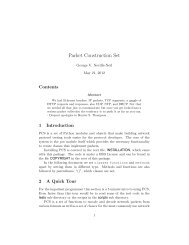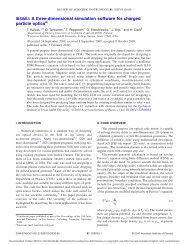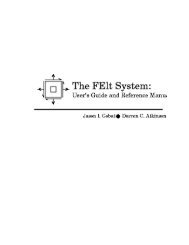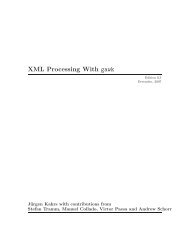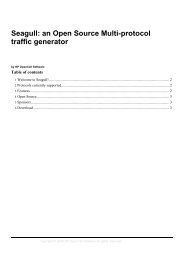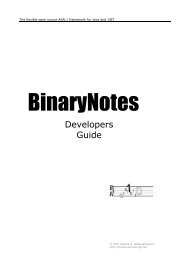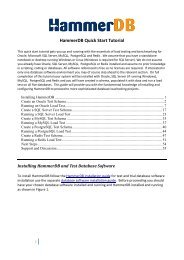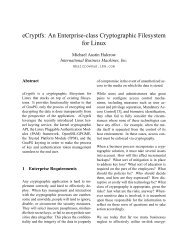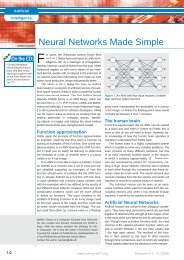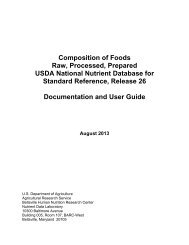System Management Bus (SMBus) Specification, version 2.
System Management Bus (SMBus) Specification, version 2.
System Management Bus (SMBus) Specification, version 2.
Create successful ePaper yourself
Turn your PDF publications into a flip-book with our unique Google optimized e-Paper software.
<strong>System</strong> <strong>Management</strong> <strong>Bus</strong> (SM<strong>Bus</strong>) <strong>Specification</strong> Version <strong>2.</strong>0<br />
<strong>2.</strong> If a pre-assigned unique ID is used, at least 16-bits must be unique. However, 32-bits is<br />
recommended.<br />
3. If a random number is implemented in this field, Random Number Requirements must be met.<br />
4. Devices that support a fixed device address must still implement this field but not uniquely.<br />
Uniqueness is important to guarantee that two like devices are identified discretely. It is the<br />
responsibility of the device/system manufacturer to determine the possibility of like devices, and<br />
the mechanism for providing uniqueness via the UDID and slave address fields.<br />
5.6.1.6. Random number requirements<br />
If a random number is utilized the following requirements must be met:<br />
1. It must be at least 16 bits in length.<br />
<strong>2.</strong> The device is not allowed to support a persistent slave address.<br />
3. The device is not allowed to support fixed addresses. (If the device has a fixed address mode, the<br />
Vendor Specific ID should be a constant, and therefore not random – this is required to guarantee that<br />
the SM<strong>Bus</strong> ARP resolution order is maintained)<br />
4. The random number must be retained while the device has power with the exceptions described in<br />
items 5 and 6.<br />
5. The random number must be regenerated when the device receives the Reset Device command.<br />
6. The random number must be regenerated when the device senses a bus collision during a read<br />
operation directed to its Assigned Slave Address. When this happens, the device must issue a host<br />
notify protocol if the device supports it.<br />
5.6.<strong>2.</strong> Power-on reset<br />
Power-on reset is described in section 3.1.4.<strong>2.</strong> In the case of ARP-capable devices, ‘operational state’<br />
implies the ability to respond to ARP commands as required in this section.<br />
Each slave device must fit into only one of these categories and must obey the power on reset state:<br />
Device Type AR Flag AV Flag SMB Address UDID<br />
PSA<br />
CLEAR Read from Read from NVR; NO CHANGE<br />
(Persistent Slave Address)<br />
NVR<br />
undefined if AV<br />
Flag is CLEAR<br />
Non-PSA / Non-Random Number CLEAR CLEAR undefined NO CHANGE<br />
Non-PSA / Random Number CLEAR CLEAR undefined Generate Random<br />
Number<br />
Table 6: Internal state of ARP-capable devices on power-on reset<br />
5.6.3. ARP commands<br />
The ARP Master can issue general commands and directed commands. A general command is targeted at<br />
all devices and is required for the address resolution process. A directed command is targeted at a single<br />
device. All packets originated by the ARP Master use Packet Error Checking (See Section 7.5) and begin<br />
with the basic format:<br />
<br />
SBS Implementers Forum 38



